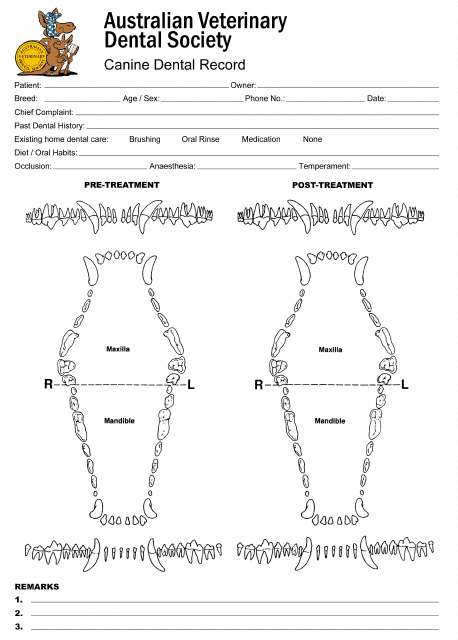Free Dog Dental Chart Templates
Dog Dental Chart: What Is It?
A Dog Dental Chart provides information about the quantity and types of teeth that your dog has. This information is particularly useful in the medical sphere where a licensed professional can evaluate the healthiness of a dog’s teeth and mark any comments using a Dog Dental Chart Template.
Alternate Name:
- Canine Dental Chart.
The normal number of teeth for an adult dog is forty-two, with twenty teeth on the top jaw and twenty-two teeth on the bottom jaw. This is generally true for all dogs and the Dog Dental Chart is simple enough to understand as all of the teeth and parts of the jaw are labeled. The chart reflects the way that these teeth are positioned in the jaw.
However, if you have a puppy then you need to pay close attention to the type of chart that you are using. This is because just like humans, puppies start their life by first developing “milk teeth” after which full, permanent adult teeth develop after a specific age. Once all of the puppy's milk teeth have emerged, the average puppy will present twenty-eight teeth overall. That is, fourteen in the top jaw and fourteen in the bottom jaw.
Such charts are also crucial in any dental procedure involving your dog. Upon thorough examination, a doctor will make notes and annotations to the chart which provides information about any pathology that was discovered upon assessment. After this, the doctor can refer to these notes in the future and perhaps most importantly, the information can be used to create a treatment plan for the dog if one is required to eradicate any dental issues a dog may be experiencing.
For a full list of Canine Dental Chart templates please feel free to check out our library below.
Haven't found the template you're looking for? Take a look at the related templates below:
Documents:
4
This document is a dental record form used by the Australian Veterinary Dental Society for canines in Australia. It helps veterinarians and dental professionals keep track of a dog's dental health and treatment history.
This template demonstrates the number of teeth that dogs should have and describes their role so that dog owners can have a better understanding of the physiology of their dog's jaw.




